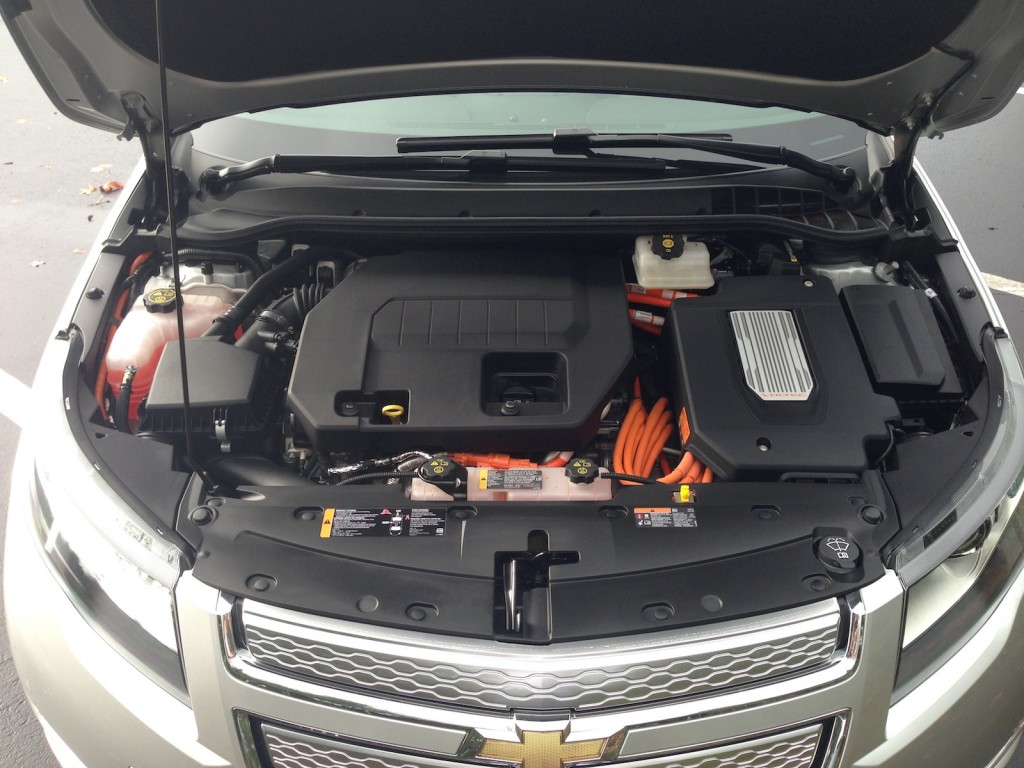

- #2013 chevy volt battery capacity kwh how to
- #2013 chevy volt battery capacity kwh install
- #2013 chevy volt battery capacity kwh generator
The federal tax credit can reduce the price by up to $7,500, and various state and local tax incentives can further reduce it. At just under $40,000, it's a pricey compact car, even with all its advanced-tech features.

Which brings us to the real knock on the Volt: cost. You'll have to factor that into your cost of ownership.
#2013 chevy volt battery capacity kwh install
But it would also cost up to $2,000 to install one in your garage.

One solution, of course, is upgrading to a 240-volt power system, which would cut charging time to about four hours. And people with older homes with outdated wiring have reported overloading their electrical circuits when trying to operate household appliances while the car was plugged in. More important, though, it takes up to 16 hours to fully charge the Volt's lithium-ion battery on normal household current, which is simply too long. Forbes contributor Jason Fogelson recently reviewed the 2013 Volt and concluded it's not quite electrifying.

Plus, despite the futuristic design of the center stack, the controls are not laid out very well. There are a few drawbacks - the back seats are cramped, for instance, because of the huge T-shaped battery down the car's spine. The switch from EV mode to gas-assisted is virtually impossible to detect, unless you're staring at the display on the high-tech touchscreen instead of watching the road. The big advantage is that when you do need to drive farther, you've got a backup system that extends the car's range to 350 miles without recharging or buying gas.
#2013 chevy volt battery capacity kwh how to
You can drive the Volt gas-free for about 35 miles, which is how loyalists with short commutes can boast that they've forgotten how to pump gas. Regenerative braking also recovers some energy to recharge the battery.
#2013 chevy volt battery capacity kwh generator
The 1.4-liter gasoline engine under the hood acts as a generator after the 16.5 kWh battery is depleted and feeds electricity back to the motor. All of the power that goes to the wheels comes from its electric motor. Though often called a plug-in hybrid, it's more accurately labeled an electric vehicle with extended range. The company's engineers also enlarged the total storage capacity of the battery from 16 kWh to 16.5 kWh, and expanded the state-of-charge window to use 10.8 kWh of the total battery energy – up from the 2012MY's 10.3 kWh.Ī downside of these improvements is a slight increase to the Volt’s charge times, with a full recharge using a 120V taking 10.5 hours and a 240V charging unit, up to 4.25 hours.To GM's credit, the Volt is indeed an engineering marvel. We’ve done some work at the cell level to modify the ‘ingredients’ to make a better end result," he adds. "Sometimes if you use more sugar and less vanilla you get a better tasting cake. "The best way to explain what we’ve done at the cell level is to compare it to a cake batter recipe," explains Bill Wallace, GM director of Global Battery Systems Engineering. General Motors says it achieved this by making some minor changes to the material composition of the battery cell chemistry, which resulted in improved performance and durability. The introduction of the 2013 model year Chevrolet Volt brings an increase in the car's pure-electric driving range by three miles (4.8 km) for a total of 38 miles (61.1 km), compared to the 2012 model's 35 mile EV range.Ĭonsequently, the 2013 Volt's miles per gallon equivalent (MPGe) will increase from 94 miles to 98 miles and the total range, including extended range operation through the use of the gasoline engine, will be 380 miles (611 km).


 0 kommentar(er)
0 kommentar(er)
